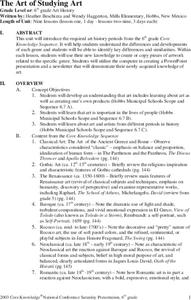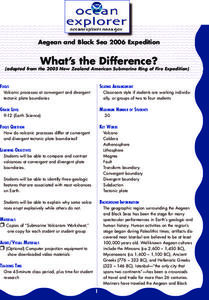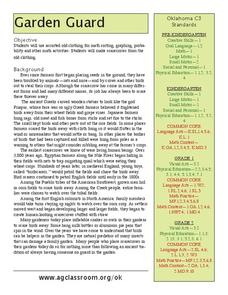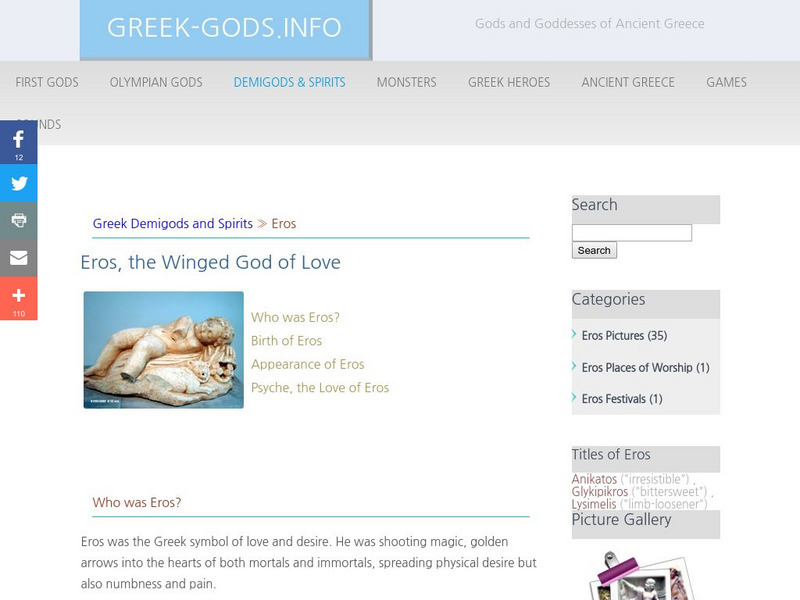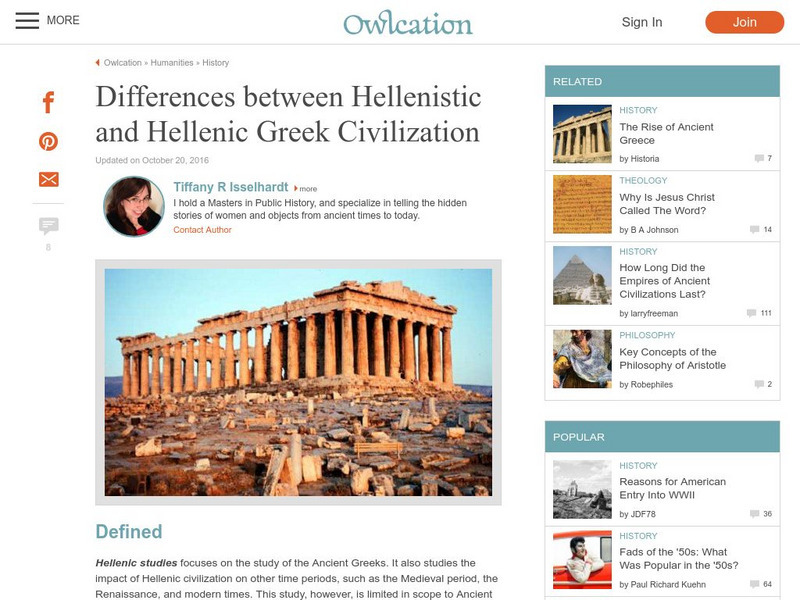Curated OER
Science in History Part I: the Abacus To the Modern Computer
In this math information worksheet, students read one page factual accounts of the early math inventions of the abacus, the calculator and early computers. There are 40 questions to answer about the reading.
Curated OER
Cloudy Days are for Reading and Writing
Students research weather proverbs and determine the scientific validity of 3 weather proverbs. They write an essay presenting their reasoning. They interview elderly people to graph the most frequently heard proverbs and theorize...
Curated OER
Heliocentric and Geocentric Models
In this learning exercise, students read an informational article and view drawings of the two models. In this comprehension learning exercise, students answer twelve questions.
Curated OER
The Art of Studying Art
Students explain the value of different genres of art. In this art lesson, students describe the differences in various genres of art and make comparisons between them. Students choose an art genre and create an original work of art...
Curated OER
Do You Have a Sinking Feeling
Students determine how marine archaeologists use historical and archaeological data to draw inferences about shipwrecks. Students plot the position of a shipwrecked vessel, and draw inferences about the shipwreck from artifacts that have...
Curated OER
What's the Difference?
Students investigate volcanic processes at convergent and divergent
tectonic plate boundaries. They read and analyze diagrams, complete a worksheet, and write an essay.
Curated OER
I Robot, Can Do That
Learners examine how underwater robots can be used to assist scientific explorations. They read and discuss an article, conduct Internet research, complete a worksheet, and present an oral report.
Curated OER
Garden Guard
Students read about the history of farming with the use of scarecrows and then sort clothing, build scarecrows, write descriptions, and more. For this scarecrows lesson plan, students also play a game called Garden Tag.
Curated OER
Clash of the Titans Lesson Plans
The new movie "The Clash of the Titans" is a great way to learn about film making and Greek Mythology.
Curated OER
Was Alexander Truly Great?
Young scholars discuss Alexander the Great and his father Philip II. They complete the worksheet, Things That Alexander Inherited, discuss Alexander's accomplishments, and write an essay examining whether Alexander was truly great.
Curated OER
The Renaissance was a Rebirth
In this Renaissance study guide worksheet, students read a brief overview pertaining to the time period in world history and then respond to 4 reflection questions.
Curated OER
SAT Sentence Completion Practice Test 10
In this sentence completion practice test, students choose the word that best completes each sentence. Students have 10 minutes to answer 12 questions in this SAT practice worksheet.
Curated OER
Explorit's Green Salad Quiz
In this food history worksheet, students read the information about the history of food and salads. Students select the correct answer for the 6 related questions.
Curated OER
Garden Guard
Students design and create scarecrows. They write descriptively about the scarecrow for a classroom scarecrow show.
Curated OER
Multiculturalism Through African Folk Tales And Mayan Myths
Students study the myths of various African cultures and of the Mayan people. They identify unique characteristics of African myths and Mayan myths. They define and recognize the style and tone of the Mayan myths and create their own...
Curated OER
What Is the History of the Consumption of Rice?
Sixth graders research the history of rice consumption. In this rice consumption lesson, 6th graders read a study guide and answer comprehension questions about two rice dishes and rice cultivation.
Greek Gods
Greek Gods: Ancient Greece: Mount Olympus
This site focuses on Mount Olympus, the Kingdom of the Olympian gods and the highest mountain in Greece.
TED Talks
Ted: Ted Ed: What Did Dogs Teach Humans About Diabetes?
Diabetes has a history dating back to Ancient Greece. Our treatment of it, however, is more recent and was originally made possible with the help of man's best friend. Due to physiological traits shared with humans, dogs have saved...
Khan Academy
Khan Academy: Activity: Social Status, Power, and Human Burials
This activity provides you with an opportunity to start thinking about the impact that farming can have on the way humans live and relate to each other. It will also allow you to think about the kinds of questions archaeologists and...
Greek Gods
Greek Gods: Demigods & Spirits: Eros
Eros (Cupid), the winged god of Love in Ancient Greece, shot golden arrows into the hearts of both humans and gods.
Other
University of Massachusetts Lowell: Italian Renaissance: Neoplatonism
This site explains how the Platonic tradition was revived in Italian Renaissance humanism. It presents an analysis of Ancient Greece and Plato's thought, and then describes how his ideas were adapted to fit humanistic teaching. It also...
Other
Louvre Museum: Thematic Trails: Greek Sculpture and the Human Body
Learn why the human form is central to the understanding and appreciation of Greek art by considering nineteen works linked together in a thematic trail. Pieces can be enlarged for closer inspection, and description windows can be opened...
Khan Academy
Khan Academy: Polykleitos, Doryphoros (Spear Bearer)
Greek art became popular when Roman generals began conquering Greek cities. This work so impressed the Roman elite that studios were set up to meet the growing demand for copies. The Doryphoros was one of the most sought after, and most...
Other
Hub Pages: Differences Between Hellenistic and Hellenic Greek Civilization
Describes the differences between the Hellenic and Hellenistic ages and the accomplishments of each period of Greek history.



